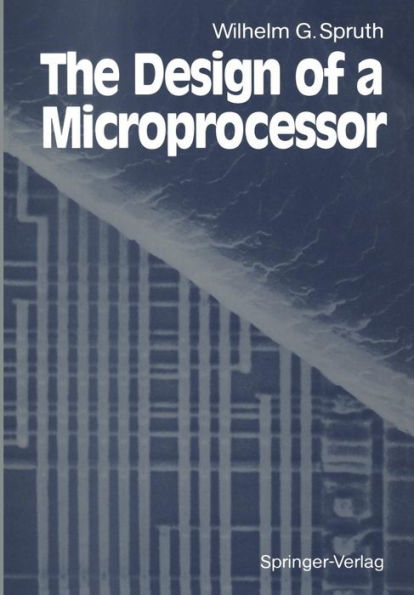The Design of a Microprocessor
This text has been produced for the benefit of students in computer and information science and for experts involved in the design of microprocessors. It deals with the design of complex VLSI chips, specifically of microprocessor chip sets. The aim is on the one hand to provide an overview of the state of the art, and on the other hand to describe specific design know-how. The depth of detail presented goes considerably beyond the level of information usually found in computer science text books. The rapidly developing discipline of designing complex VLSI chips, especially microprocessors, requires a significant extension of the state of the art. We are observing the genesis of a new engineering discipline, the design and realization of very complex logical structures, and we are obviously only at the beginning. This discipline is still young and immature, alternate concepts are still evolving, and "the best way to do it" is still being explored. Therefore it is not yet possible to describe the different methods in use and to evaluate them. However, the economic impact is significant today, and the heavy investment that companies in the USA, the Far East, and in Europe, are making in gener ating VLSI design competence is a testimony to the importance this field is expected to have in the future. Staying competitive requires mastering and extending this competence.
1116787781
The Design of a Microprocessor
This text has been produced for the benefit of students in computer and information science and for experts involved in the design of microprocessors. It deals with the design of complex VLSI chips, specifically of microprocessor chip sets. The aim is on the one hand to provide an overview of the state of the art, and on the other hand to describe specific design know-how. The depth of detail presented goes considerably beyond the level of information usually found in computer science text books. The rapidly developing discipline of designing complex VLSI chips, especially microprocessors, requires a significant extension of the state of the art. We are observing the genesis of a new engineering discipline, the design and realization of very complex logical structures, and we are obviously only at the beginning. This discipline is still young and immature, alternate concepts are still evolving, and "the best way to do it" is still being explored. Therefore it is not yet possible to describe the different methods in use and to evaluate them. However, the economic impact is significant today, and the heavy investment that companies in the USA, the Far East, and in Europe, are making in gener ating VLSI design competence is a testimony to the importance this field is expected to have in the future. Staying competitive requires mastering and extending this competence.
54.99
In Stock
5
1

The Design of a Microprocessor
346
The Design of a Microprocessor
346Paperback(Softcover reprint of the original 1st ed. 1989)
$54.99
54.99
In Stock

Product Details
| ISBN-13: | 9783642749186 |
|---|---|
| Publisher: | Springer Berlin Heidelberg |
| Publication date: | 01/28/2012 |
| Edition description: | Softcover reprint of the original 1st ed. 1989 |
| Pages: | 346 |
| Product dimensions: | 6.69(w) x 9.53(h) x 0.03(d) |
From the B&N Reads Blog
